Predictions & Data for this entry
| Model: std | climate: Cfa, Cfb, Dfa, Dfb | migrate: | phylum: |
| COMPLETE = 3.5 | ecozone: TH | food: bjP, biD, jiCi, jiS | class: |
| MRE = 0.091 | habitat: 0iFr, 0iFl | gender: D | order: |
| SMSE = 0.025 | embryo: Fbf | reprod: O | family: |
Zero-variate data
| Data | Observed | Predicted | (RE) | Unit | Description | Reference |
|---|---|---|---|---|---|---|
| ah | 70 | 73.23 | (0.0461) | d | age at hatching | CelaPaz1987 |
| ab | 80 | 76.84 | (0.03946) | d | age at birth | KozaBuri2009 |
| tp | 1095 | 1110 | (0.01362) | d | time since birth at puberty for females | Abra1971 |
| tpm | 730 | 723.3 | (0.009155) | d | time since birth at puberty for males | Abra1971 |
| am | 7300 | 7295 | (0.000654) | d | life span | SoutHold2006 |
| Lb | 1.1 | 0.7532 | (0.3153) | cm | total length at birth | KozaBuri2009 |
| Lp | 8 | 8.29 | (0.03628) | cm | total length at puberty females | SoutHold2006 |
| Lpm | 8.2 | 8.329 | (0.01569) | cm | total length at puberty males | Abra1971 |
| Li | 12 | 13.04 | (0.08636) | cm | ultimate total length for females | KoesSoes2011 |
| Lim | 16 | 16.89 | (0.0559) | cm | ultimate total length for males | KoesSoes2011 |
| L2 | 7.9 | 6.464 | (0.1817) | cm | total length at 2yr for females | Abra1971 |
| L2m | 8.2 | 7.685 | (0.06281) | cm | total length at 2yr for males | Abra1971 |
| Wwh | 0.01575 | 0.01598 | (0.0149) | g | wet weight at hatching | KozaBuri2009 |
| Wwb | 0.035 | 0.01599 | (0.543) | g | wet weight at birth | KozaBuri2009 |
| Wwp | 29 | 21.33 | (0.2645) | g | wet weight at puberty | Abra1971, WestSavo2002 |
| Wwi | 89.4 | 82.93 | (0.07238) | g | ultimate wet weight for females | Abra1971, WestSavo2002 |
| Wwim | 212 | 208.9 | (0.01464) | g | ultimate wet weight for males | Abra1971, WestSavo2002 |
| Ri | 0.9589 | 0.9619 | (0.003109) | #/d | max reprod rate | SoutHold2006 |
| E0 | 64.07 | 71.07 | (0.1093) | J | initial energy content of the egg | RodrGarc2006, PawlKorz2010 |
Uni- and bivariate data
| Data | Figure | Independent variable | Dependent variable | (RE) | Reference |
|---|---|---|---|---|---|
| tL_T2 | 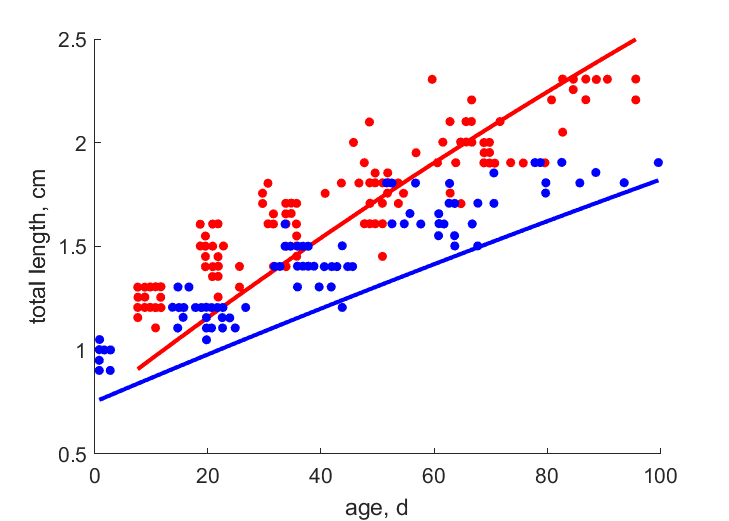 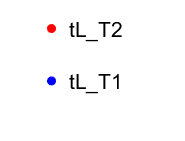 | age | total length | (0.1085) | KozaBuri2009 |
| tL_T1 |   | age | total length | (0.1535) | KozaBuri2009 |
| LWw_fem | 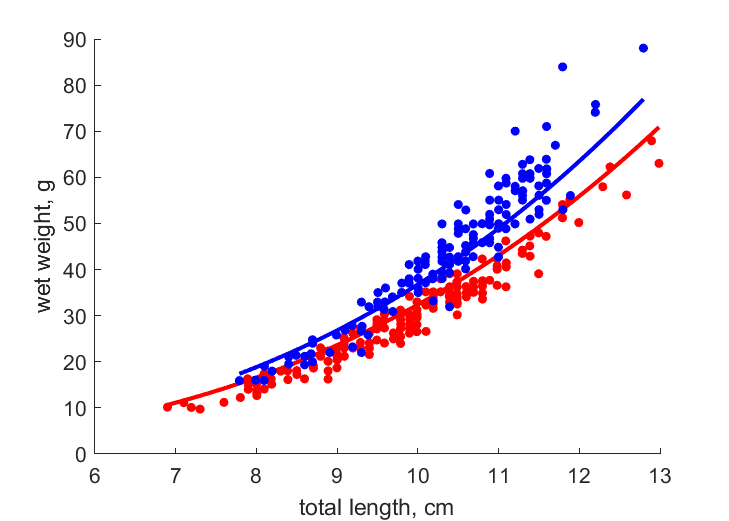 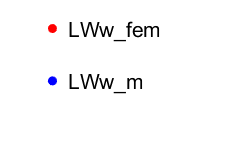 | total length | wet weight | (0.09044) | WestSavo2002 |
| LWw_m |   | total length | wet weight | (0.09111) | WestSavo2002 |
| tL_Gonz2010_f2 | 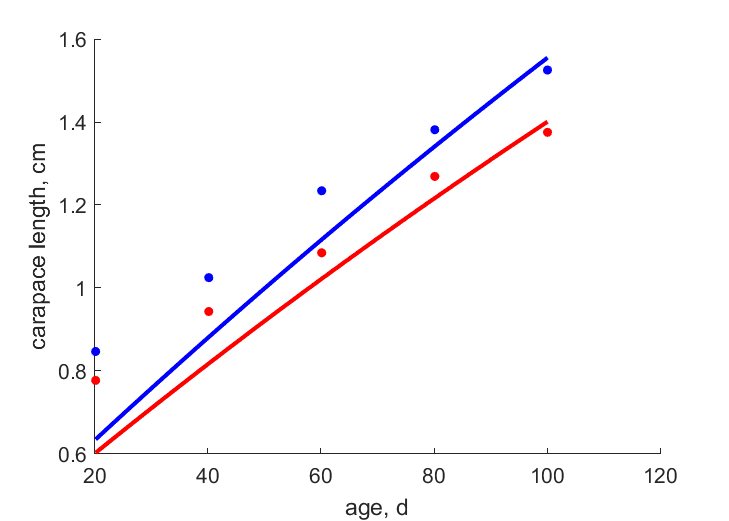  | age | carapace length | (0.08084) | GonzCela2010 |
| tL_Gonz2010_f1 |   | age | carapace length | (0.09025) | GonzCela2010 |
| tWw_Gonz2010_f2 | 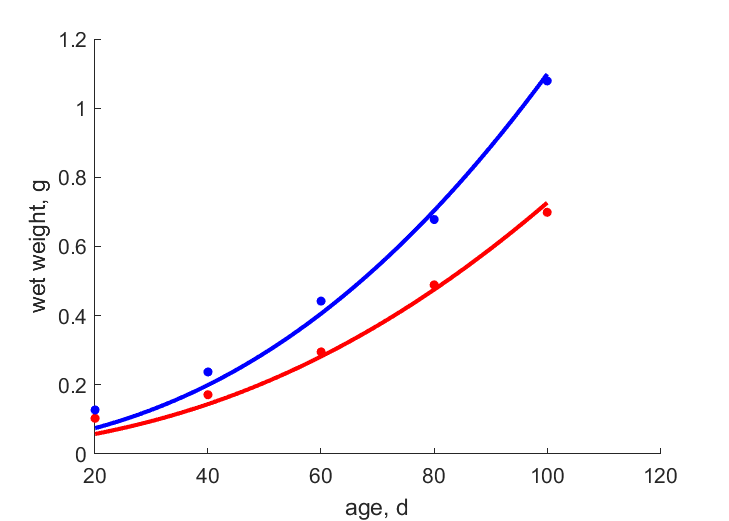  | age | wet weight | (0.07239) | GonzCela2010 |
| tWw_Gonz2010_f1 |   | age | wet weight | (0.06721) | GonzCela2010 |
| tWw_T2 | 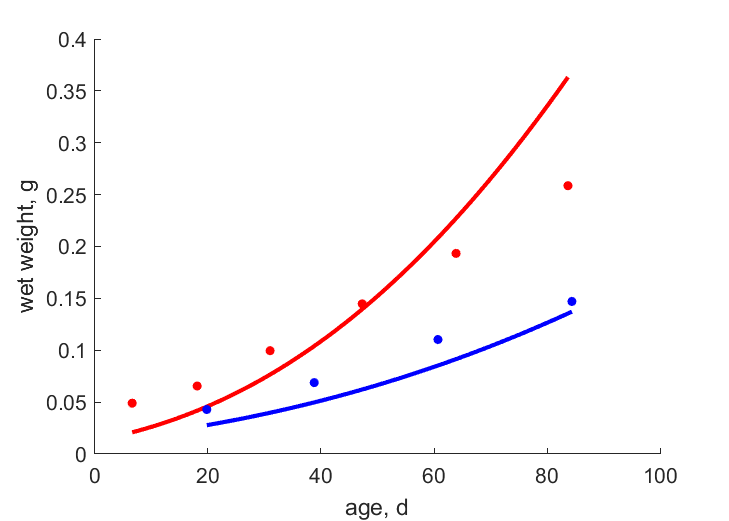 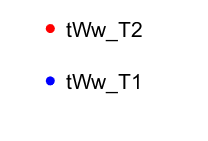 | age | wet weight | (0.2697) | KozaBuri2009 |
| tWw_T1 |   | age | wet weight | (0.1876) | KozaBuri2009 |
| LN |  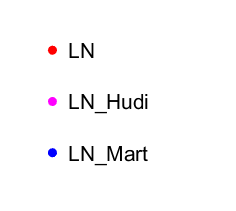 | total length | number of eggs | (0.2408) | Abra1971 |
| LN_Hudi |   | total length | number of eggs | (0.2373) | HudiLuci2011 |
| LN_Mart |   | total length | number of eggs | (0.1791) | Mart2011 |
| LW | 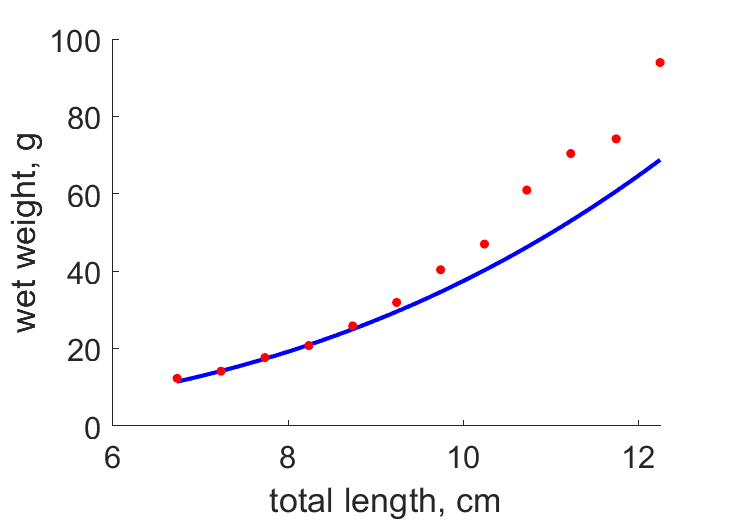 | total length | wet weight | (0.1728) | Abra1971 |
| tL_Belc1998 | 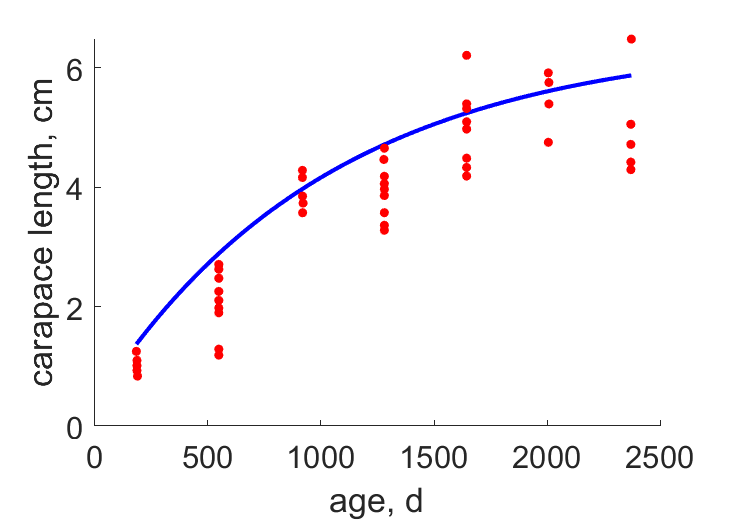 | age | carapace length | (0.1757) | BelcEdsm1998 |
| tWw_Belc1998 | 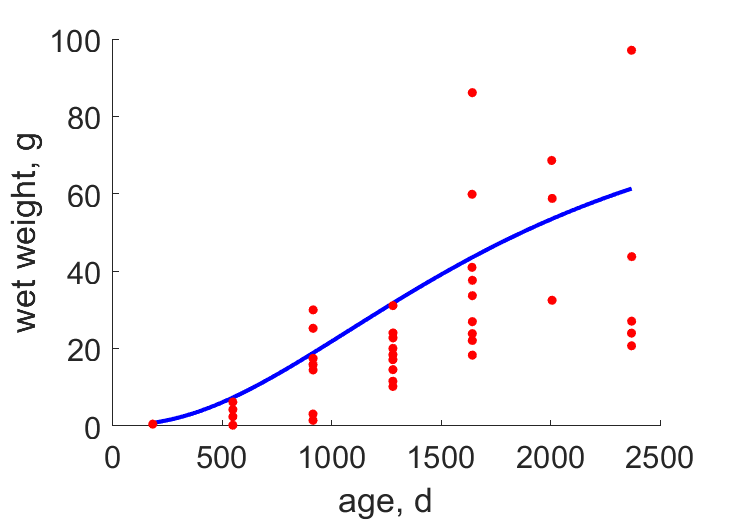 | age | wet weight | (0.5529) | BelcEdsm1998 |
Pseudo-data at Tref = 20°C
| Data | Generalised animal | Pacifastacus leniusculus | Unit | Description |
|---|---|---|---|---|
| v | 0.02 | 0.04727 | cm/d | energy conductance |
| kap | 0.8 | 0.9136 | - | allocation fraction to soma |
| kap_R | 0.95 | 0.95 | - | reproduction efficiency |
| p_M | 18 | 56.62 | J/d.cm^3 | vol-spec som maint |
| k_J | 0.002 | 0.002 | 1/d | maturity maint rate coefficient |
| kap_G | 0.8 | 0.8183 | - | growth efficiency |
Discussion
- males are assumed to differ from females by {p_Am} and E_Hp only
- mod_1: Included new data: ah, ab, Lb, Wwh, Wwb, Ri, E0, age-length at several temperatures, age-wet weight, length-wet weight for males and females,age-length and age-wet weight at two food levels (COMPLETE level from 2.5 to 3.5). Added facts to the entry
- mod_1: Model std is applied, instead of abj, since freshwater crayfish, unlike marine decapods, have no larval stage
- mod_1: Parameter values different: zoom factor a more realistic value of around 2, rather than <1, [p_M] slightly higher, t_0 not used
Facts
- mod_1: Development of free-living larval stage occurs inside the egg and a miniature crayfish hatches (typical for freshwater crayfish) (Ref: McLaBrin2016)
- mod_1: Incubation in nature is relatively long, as for other Astacidae: lasts 160 to 270 days (1500 to 2200 thermal units) and includes a cold diapause (Table 13.1 in Holdich 2002).Skipping the diapause by warmer temperatures (>10C) shortens the incubation but can reduce later survival and growth. (Ref: Hold2002)
- mod_1: Adaptations to freshwater habitat includes relatively few yolk-rich eggs combined with the loss of free larvae (direct development), and brood care pattern. (Ref: Hold2002)
Bibliography